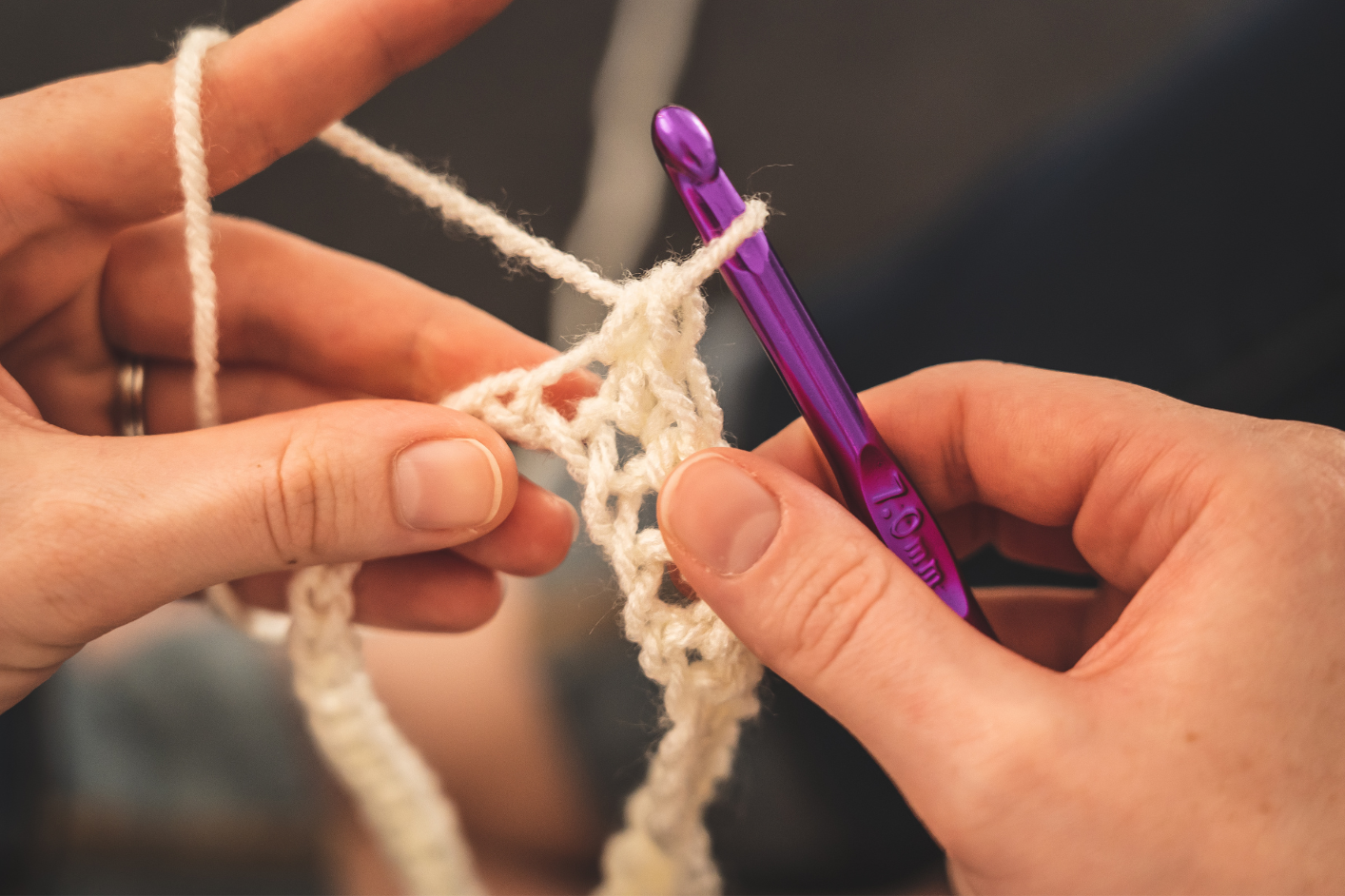'Dear Chatterbox' - AT for hobbies

AT Chat are passionate about supporting our community to find the right AT to live, work and play, and recently we asked our community of assistive technology (AT) user - 'AT Chatterbox', if there was a hobby that they'd love to get into but are facing barriers to getting started. Our community delivered and, on this page, we have a selection of the questions we received, as well as the responses put together by the AT Chat team that include suggested AT as well as groups they could connect with and courses they could try. Perhaps they could inspire you too!
Metal magic
Dear Chatterbox,
I like making metal models, but my hands don’t work well anymore. I need to figure out how to bend the metal without damaging the enamel or breaking the metal.
- Chatterbox member Madelon
Hi Madelon,
Metal models is very interesting and hopefully using a few tips and tricks you can continue to make them.
- Pad everything that touches the enamel. Use silicone or painter's tape to provide extra cushioning and protection of the enamel.
- Use leverage and not grip strength. If pliers are painful to use a bench vise made with a softer material such as soft copper or nylon may prevent damage to the enamel or metal. This would then allow you to push of pull the end of the pieces with more leverage and less force. If a vise is already stabilising the material and further support in making the bend is required, an arbor press provides a longer handle which may make this easier.
- Bend the metal in stages. Scoring the enamel with a knife (and caution as this could be unsafe if not careful) will relieve pressure from the enamel cracking. Make bends in small stages rather than one sharp bend.
- Metal alternatives. Brass and copper can be easier metals to bend, however, you would need to consider if this is durable enough for your model.
- Ergonomic add-ons. Foam or silicone grip sleeves can make distribute the pressure on your hands and support your grip.

Crafting for fun
Dear Chatterbox,
Craft is a hobby I really love. It’s something I’ve enjoyed for a long time — working with my hands, creating something tactile, and getting into the rhythm of making.
As someone who is deafblind, I sometimes face barriers that make crafting more difficult. One of the biggest challenges is accessing the fine details of the materials I’m working with. A magnifier lamp or video magnifier could really help — allowing me to see textures and shapes more clearly, and giving me more independence in my hobby.
These tools can be expensive, and it’s not always easy to know what will actually work best for me.
- Chatterbox member Kirsty
Hi Kirsty,
It’s clear how important crafting is to you, and I hope that some of the links and resources below could help you to get into the rhythm of crafting again.
You mentioned that a magnifier lamp or video magnifier might help give you more independence in your hobbies, have you considered these examples?
- Crafters Choice Led Amplifier Table Lamp White
- Ryobi 18V ONE+ Magnifying Clamp Light
- 1.5x Chest Magnifier (Hands free)
- Daylight Yoyo Magnifier LED
For more inspiration you could read a couple of articles on the AT Chat and iLA websites about crafting:
- Greg’s story on the AT Chat website
- AT suggestions, as well as examples of crafts you could try, on the LiveUp website

Irish harpist
Dear Chatterbox,
I would love to learn the Irish harp but both time poor and it's expensive.
- Chatterbox member Kathy
Hi Kathy,
Learning online might help you to do short sessions of learning, being able to start and stop around your other commitments, and being able to learn outside of regular business hours (depending on whether it would disturb anyone else that lives with you).
- Online Academy of Irish Music offers an online course called Learn How to Play the Celtic Harp with a free 14 day trial (22 euro per month or 95 euro for 6 months). You can access the first and second lesson on YouTube to see what you think.
- Amazing Talker, SuperProf, and Music Teachers Online offer the option to search for tutors near you or online, and list the rates of the tutors.
To save money, you could look connecting with an Irish exchange student or someone from your local Irish Community (for example The Irish Club of WA, The Claddagh Association, Perth Comhaltas (Australia), or Irish in Perth | Facebook) and organising a skills or service swap.

Craving crochet
Dear Chatterbox,
I loved your resources on Sensory Kits last month and would like to learn to crochet so I can use it as part of my toolkit when I am out and about. I have joint hypermobility, which means sometimes the joints in my hands move out of place and this can cause a lot of pain, which limits how I can move my hands and what I can do. Have you got any suggestions?
- Anonymous
Hi Anon,
- Arthritis or Adaptive Crochet Hooks might be helpful because they have large handles and a soft group to help reduce pain and muscle fatigue.
- Adaptive Grip Aids are soft, flexible and stretchy silicone aids that can support hand grip including strength, mobility and proprioception. (e.g. Hook Helper – Interchangeable Ergonomic Silicone Crochet Hook Handle | Squishy Gift for Crocheters - Etsy Australia, Ergozebra Starter Pack Gift Set - Ergonomic Crochet Hook - Ehlers Danlos & Hypermobility Friendly - Arthritis Friendly - Etsy Australia)
- Foam Tubing (also known as plastazote tubing) is available in various sizes and can be used to provide a built-up handle for easier gripping of cutlery, pens and crochet hooks. The tubing is non-absorbent, non-sticky, washable and dishwasher safe, which reduces the risk of affecting your yarn. Another option is a Beauty Blender
- Crochet Hook Helpers such as the Crochetobe Tool are tools that assist crocheters with controlling tension, reducing hand fatigue, and improving overall comfort during crocheting.
- Digital Row Counters are counters you wear on your finger and you can use them to keep track of stitches or rows (Digital Row Counter | Crochet Australia)
- Yarn Holders such as a yarn bowl, hands free portable yarn holder (Amazon.com: Wrist Yarn Holder, Portable Wrist Yarn Ball Minder Stand with Crossbody Strap Wooden Twizzling Yarn Organizer Storage Knitting Supplies Crocheting Gift for Craft Lover) or the Wool Jeanie Magnetic can hold your yarn while you work to give you a constant feed of yarn, for an evenly knitted or crocheted item.
- Stitch Markers can be used to secure your stitch while you're not working on your project, or to mark any significant points in your project - you can slip them on or off marked stitches whenever you like.
- Yarn Tension Rings can be worn on your finger to help to keep yarns untangled and at an even tension while crocheting. (e.g. https://www.crochetaustralia.com.au/product/accyrntenring/) Yarn Winders can be helpful when rewinding balls of yarn or frogging large projects.
- Light Up Crochet Hooks offer a light range setting from medium to bright, making them perfect for crocheting in low light without straining your eyes. And the best part? They only take 15 minutes to fully charge, giving you a solid 7 to 9 hours of crochet time! They can be helpful when working with dark yarns and in low light, however the light moving might impact people who suffer from nausea/motion sickness.
- A Stable Table can be used as a stable platform if you are sitting in a chair to support your arms and reduce tiredness in your hands while crocheting or doing other craft that uses your hands.
For anyone with low vision, crochet might be easier than knitting because the needles are thicker and it’s easier to see the holes. Helpful AT might include a magnifier, large print patterns or braille patterns. In WA, Visability can provide alternative formats of documents to eligible people who have a print disability for free – this includes Braille knitting and crochet patterns.
Links:
- Low-risk AT for leisure | KeepAble
- Adult Daily Living Activities (EasyHold), YouTube (video showing it used for crochet hook)
- Testing Ergonomic Crochet Hook HACKS - Crochet Tips and Tricks - YouTube (comparing tennis ball, beauty blender and Boye Ergonomic Crochet Hook Handle)
- Buy Plastazote Tubing Online - Independent Living Specialists
- Full Review of Crochetobe Tool! The MAGIC CROCHET HELPER!!!
- The WoolJeanie - Review and How To Assemble/Use - YouTube
- They're hooked! Braille crochet and knitting patterns - VisAbility WA

Raise your voice
Dear Chatterbox,
I really enjoy singing and want to sing with other people. Ideally, I’d like to join a choir, but I have a physical disability that affects my mobility and get tired easily, so transport and accessibility of the venue might be tricky. Do you have any ideas?
- Anonymous
Hi Anon,
Have you considered joining a virtual choir? A few pieces of mainstream equipment, might be the AT that make this successful.
Links for some online choirs:
- Virtual Online Choir - Pop Choir (uses Zoom, $49.85/Monthly, with option for free trial)
- Soul Song Choirs Viral Choir (uses Zoom. $133- $205/term or $12-18/week, with option for free trial)
- The Adult Glee Club - Home ($240/quarter, with option for $25 trial)
The choirs listed above use Zoom, rather than specific audio recording software, so to join in you’ll need a tablet, laptop or desktop computer that can use Zoom, a microphone, headphones and a stable internet connection. If you don’t have enough USB ports on your device, you might find a simple USB hub helpful (e.g. UGREEN 4 in 1 USB-C Hub | Officeworks).
To reduce fatigue, you might consider a microphone with a built-in stand (e.g. condenser microphone Rode NT-USB Mini Studio Quality USB Microphone - JB Hi-Fi). The stand keeps the microphone stable and allows for flexible positioning.
Over-ear headphones are recommended to monitor the audio during recording and prevent sound bleed into the microphone. With any headphones, it’s important to try them on first if you can, to ensure that they fit well, are easy to put on and take off and are comfortable for extended periods of use. (e.g. https://www.beyerdynamic.com.au/products/dt-770-pro-80 or https://www.sennheiser-hearing.com/en-AU/p/momentum-4-wireless)
Other links:
AI Overview
For a basic online choir setup in Australia, you'll need a computer, audio recording software, a microphone, headphones, and a stable internet connection. For more advanced setups, consider adding an audio interface, a pop filter, a microphone stand, and potentially acoustic treatment for your recording space.
Optional but Recommended Equipment:
- Audio Interface: An audio interface connects the microphone to the computer and can improve audio quality.
- Pop Filter: A pop filter helps reduce plosives (harsh "p" and "b" sounds) when singing into the microphone. (e.g. Stadium POPSTOP Universal Pop Filter - JB Hi-Fi)
- Acoustic Treatment: If you're recording in a room with poor acoustics, acoustic panels or foam can help reduce echoes and improve sound quality. (e.g. 1200 x 800mm 9mm Acoustic Pinboard Purple - Bunnings Australia or Alpha Acoustic Foam 20pcs 50x50x5cm Sound Absorption Proofing Panels Eggshell - Bunnings Australia)

AT in this Spotlight
In addition to seeking assistance through a support worker or Allied Health Professional, the AT suggested in this resource includes:
Please note that the links provided above are not an affiliate links; we do not receive any commission if you purchase through them.
Our Facebook group Chatterbox is open to all assistive technology (AT) users. If you would like to join the AT chat to share your experience and connect with your peers about an AT solution please follow the link below and join this amazing community.




